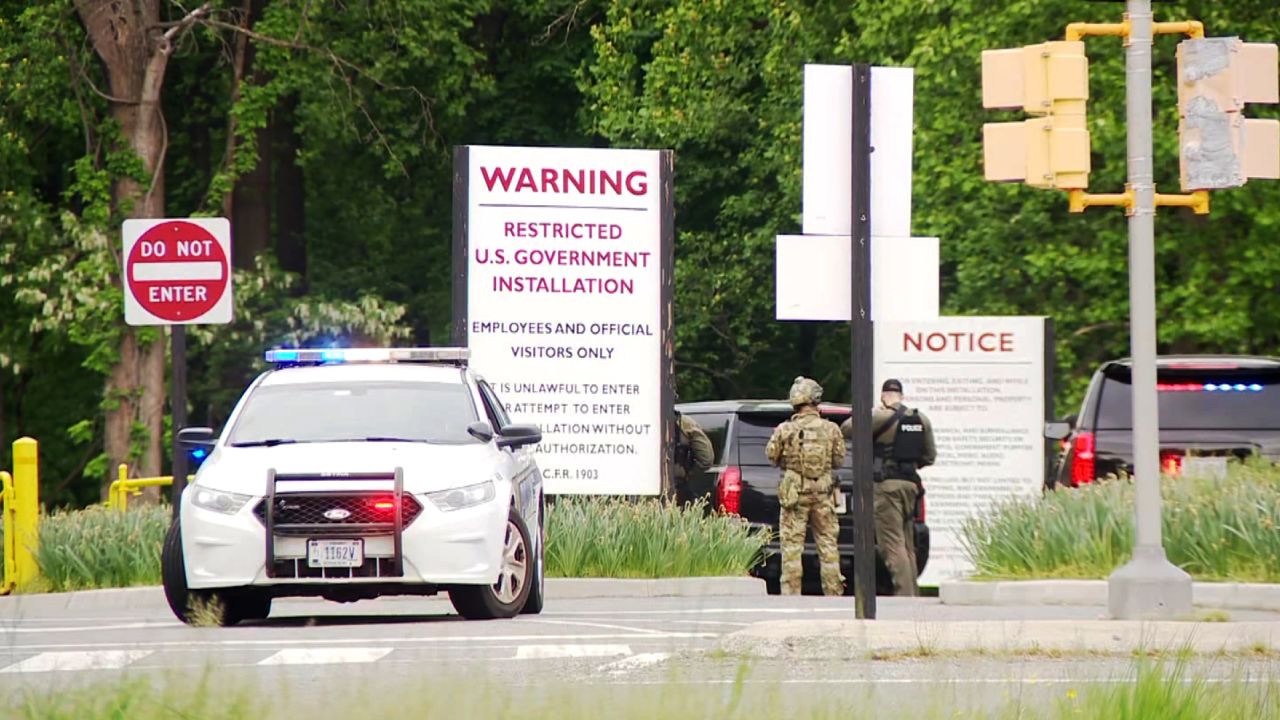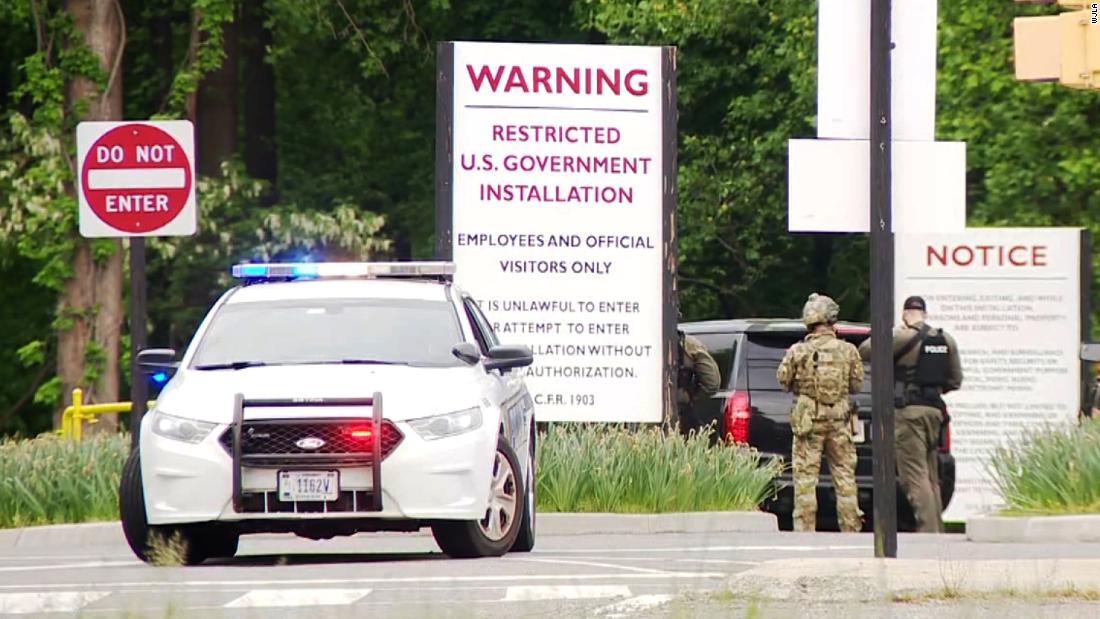Resolving A High-Stakes Standoff Near CIA Headquarters: A Closer Look
A tense standoff unfolded near the Central Intelligence Agency (CIA) headquarters in Virginia, culminating in the suspect's surrender after hours of negotiations. The event drew national attention and underscored the critical role of law enforcement in addressing high-stakes situations. This incident highlights the challenges police officers face in maintaining public safety while navigating complex scenarios.
The situation began early in the morning when authorities received reports of an individual barricading themselves near the CIA headquarters. Law enforcement quickly responded, deploying a significant police presence to secure the area. As the standoff dragged on, it captured the attention of both local residents and national media outlets, amplifying the urgency of the situation.
This article provides an in-depth examination of the incident, exploring the events leading up to the suspect's surrender, the role of law enforcement, and the broader implications for public safety. Additionally, it delves into the negotiation strategies employed during the standoff and the significance of effective communication in crisis situations.
Read also:High Point University Students Shine In Viral Championship Game Radio Call
Table of Contents
- Background of the Standoff
- Timeline of Events
- Role of Law Enforcement
- Negotiation Strategies
- Public Safety Concerns
- Media Coverage and Public Reaction
- Legal Implications
- Psychological Aspects of Standoffs
- Lessons Learned
- Conclusion
Understanding the Standoff
The incident near the CIA headquarters in Virginia began when an armed individual barricaded themselves inside a vehicle. The proximity to a highly sensitive government facility heightened the urgency and concern among authorities. Although the suspect's identity remains undisclosed, their actions warranted immediate attention from law enforcement due to the potential threats involved.
Preliminary Reports
Early reports indicated that the suspect had access to firearms, posing a significant risk to both law enforcement and the public. In response, local authorities swiftly established a perimeter around the area, ensuring that civilians were evacuated and kept at a safe distance. The presence of the CIA headquarters nearby added complexity, necessitating enhanced security measures to prevent potential breaches.
Detailed Timeline of Events
The standoff lasted several hours, each moment filled with tension and uncertainty. Below is a detailed timeline of the events as they unfolded:
- 6:00 AM: Initial reports of the suspect near the CIA headquarters emerged.
- 6:30 AM: Law enforcement arrived on the scene and established a secure perimeter.
- 7:00 AM: Negotiation teams initiated contact with the suspect.
- 9:00 AM: Communication became increasingly challenging, raising tensions.
- 11:00 AM: After hours of negotiation, the suspect surrendered peacefully.
The Crucial Role of Law Enforcement
Law enforcement agencies played a pivotal role in resolving the standoff near the CIA headquarters. Officers from multiple agencies collaborated to ensure a coordinated and effective response, leveraging their expertise in crisis management and negotiation. Specialized units, such as SWAT teams, provided additional support and preparedness for any potential escalations.
Coordination Between Agencies
Effective coordination between local police, federal agencies, and the CIA was essential in managing the situation. Communication channels were established to ensure that all parties were informed and aligned in their approach. This level of cooperation is critical in high-stakes situations where the stakes are significant and the potential for danger is high.
Effective Negotiation Strategies
The negotiation strategies employed during the standoff were instrumental in achieving a peaceful resolution. Trained negotiators worked diligently to establish trust and rapport with the suspect, addressing their concerns and de-escalating the situation. The use of empathy, active listening, and reassurance were key components of the negotiation process.
Read also:Pete Davidson And Elsie Hewitt A New Love Story In The Spotlight
Key Negotiation Techniques
- Building trust and rapport with the suspect to foster open communication.
- Addressing immediate needs and concerns to alleviate stress and tension.
- Providing reassurances and options for surrender to encourage cooperation.
Ensuring Public Safety
Public safety remained a top priority throughout the standoff. Authorities implemented several measures to protect civilians and minimize the risk of collateral damage. These measures included evacuating nearby residents, closing roads, and restricting access to the area.
Community Response
Local residents responded with understanding and cooperation, adhering to the instructions provided by law enforcement. The community's support and patience were crucial in facilitating a smooth resolution to the standoff. Public awareness campaigns were also launched to educate citizens on how to respond appropriately in similar situations.
Media Coverage and Public Reaction
The standoff near the CIA headquarters garnered significant media attention, with news outlets providing live updates and analysis of the situation. The public reaction was a mix of concern and admiration for the efforts of law enforcement in resolving the crisis. Social media platforms were abuzz with discussions and opinions on the incident.
Impact of Media on Crisis Situations
While media coverage can provide valuable information to the public, it can also influence the behavior of suspects and complicate negotiations. Law enforcement agencies must carefully manage media relations during crises to ensure that sensitive information is not disclosed prematurely, maintaining the integrity of the operation.
Legal Consequences
The legal implications of the standoff near the CIA headquarters are significant. The suspect is likely to face charges related to the incident, including threatening federal officials and unlawful possession of firearms. Legal experts will analyze the case to determine the appropriate charges and potential penalties.
Judicial Process
The judicial process will involve a thorough investigation into the events leading up to the standoff and the actions of the suspect during the incident. Evidence collected by law enforcement will be presented in court, and legal proceedings will proceed according to established protocols, ensuring justice is served.
Psychological Effects of Standoffs
Standoffs can have profound psychological effects on both the suspect and law enforcement personnel involved. The intense pressure and prolonged tension can lead to stress, anxiety, and emotional exhaustion. Psychological support services are often provided to those affected by such incidents to aid in their recovery and well-being.
Support for Law Enforcement
Law enforcement officers involved in standoffs require ongoing support to cope with the psychological impact of their duties. Training programs and counseling services are essential components of maintaining the mental well-being of officers who regularly face high-stakes situations. Providing these resources ensures they remain effective in their roles.
Key Takeaways from the Incident
The standoff near the CIA headquarters in Virginia offers valuable lessons for law enforcement and the public. The successful resolution of the incident highlights the importance of effective communication, coordination, and negotiation skills in crisis situations. It also underscores the need for continued training and preparedness to address similar incidents in the future.
Improving Crisis Management
Law enforcement agencies can enhance their crisis management capabilities by incorporating lessons learned from past incidents into their training programs. Regular drills and simulations can help officers develop the skills necessary to handle high-pressure situations effectively, ensuring public safety is maintained.
Final Thoughts
The standoff near the CIA headquarters in Virginia exemplifies the dedication and professionalism of law enforcement officers in resolving high-stakes situations. Through effective communication, coordination, and negotiation, authorities achieved a peaceful resolution, ensuring the safety of all parties involved. As we reflect on this incident, it is essential to recognize the importance of continued training and preparedness in maintaining public safety.
We invite you to share your thoughts and opinions on this article in the comments section below. For more insightful content on law enforcement and public safety, explore our other articles and resources. Together, we can contribute to a safer and more informed community.
Data and statistics for this article were sourced from reputable news outlets and government reports, ensuring the accuracy and reliability of the information presented. For further reading, consider exploring related topics such as crisis management, negotiation techniques, and public safety strategies.


